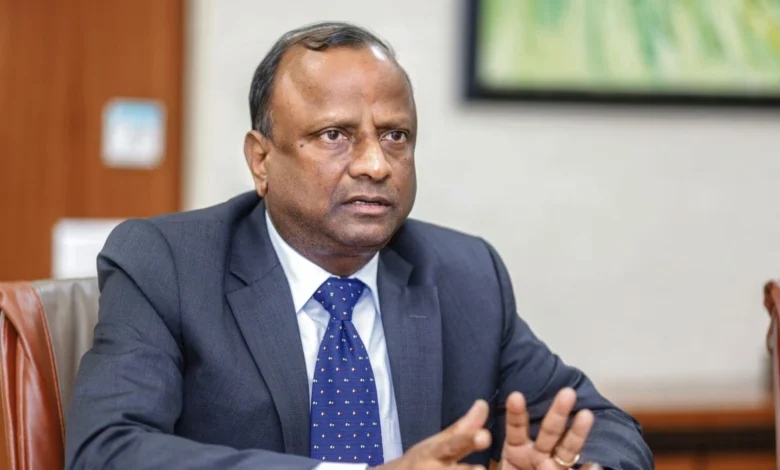Reality of MSME Lending, Risk Management and Challenges: Former SBI Chairman Rajesh Kumar

In India, financial inclusion has been a key focus for both the government and financial institutions, but are small businesses truly getting the support they need? Or is the financial ecosystem still dealing with deep-rooted issues that policy changes alone cannot address? In a detailed interview, former SBI Chairman Rajnish Kumar, explored the reality of MSME lending, risk management challenges, the limitations of fintech, and the need for stronger regulatory frameworks.
Understanding MSME Lending: Are Banks Too Cautious?
Rajesh Kumar believes that concerns about banks being overly cautious when it comes to lending to MSMEs (Micro, Small, and Medium Enterprises) are often exaggerated. He points out that the system’s capacity, as evidenced by a steady credit growth rate of 15-16% per year, shows that financial institutions are doing their part in providing loans to small businesses. However, he also stresses that the economy itself can only absorb so much credit growth before risks such as inflationary pressures start to rise.
If credit growth were to accelerate too quickly, it could lead to destabilizing effects on the economy. The pace at which credit is being issued aligns with the overall nominal growth of the economy, so it is not necessarily a sign of risk aversion by banks.
The Role of Government in Risk Mitigation
The government plays a vital role in risk mitigation through initiatives like the CGTMSE (Credit Guarantee Fund Trust for Micro and Small Enterprises) and Mudra schemes, which offer loans and credit guarantees to small businesses. While these schemes help banks offer loans to businesses that might otherwise be seen as risky, Kumar notes that such guarantees can cause market distortions.
He acknowledges that government support can be necessary for providing affordable credit to specific sectors, especially those deemed high-risk. However, if businesses were solely reliant on market prices without government help, financial inclusion would become challenging. Banks would be forced to charge high interest rates to offset risks, which would make loans unaffordable for many small businesses.
In essence, the government’s role in making credit more accessible at a lower cost is critical. While this cannot continue indefinitely, it serves as a temporary solution until businesses become more self-sufficient.
The Importance of Formalizing MSMEs
Kumar is optimistic about the formalization of the MSME sector in India. He believes that initiatives like Udyam registration, GST registration, and tax filing are key steps toward bringing businesses into the formal economy. This formalization is crucial for accessing institutional financing, as banks require these registrations to evaluate creditworthiness.
In addition, the Reserve Bank of India (RBI) has proposed reforms like co-lending models, which combine the strengths of both banks and non-banking financial companies (NBFCs) to benefit borrowers. This approach is seen as a promising way to increase credit flow to small businesses.
Payment Banks: Why They Haven’t Lived Up to Expectations
Despite the hype, payment banks have not been very successful so far, according to Kumar. He sees the business model of payment banks as restrictive, which makes it difficult for them to compete with universal banks. While small finance banks and development finance institutions (DFIs) have their roles, it is the universal banks that tend to thrive in the long run. Kumar believes that limiting a bank’s business model can prevent it from succeeding.
The Role of Digital Lenders
Digital lenders have emerged as a more efficient way of providing loans by using technology to streamline the lending process. These lenders help reduce operational inefficiencies and make it easier for small businesses to access loans. By leveraging technology, digital lenders can offer quicker loan origination, better traction, and more efficient collections. Kumar sees this as a positive step forward for MSME lending.
Regulation of the Financial Sector: Why It’s Necessary
When it comes to managing money, regulation is essential. Whether or not regulations are seen as restrictive, they are crucial for protecting against money laundering, terror financing, and other financial crimes. In the absence of regulations, the risk of fraud and misconduct increases, which can harm both businesses and the economy.
Global Economic Impacts and India’s Position
Global economic factors, such as tariffs and protectionist policies, can have a ripple effect on India’s economy. Kumar believes that if global economic growth slows down due to such factors, India will not remain unaffected. Although India’s financial system is more transparent than countries like China, the impact of global economic shifts on exports and GDP growth cannot be ignored.
While China has made significant strides in technology, especially in financial technology, Kumar suggests that India must continue to develop its own systems. India’s financial infrastructure is well-established, and the country has its own strengths that should be nurtured.
Conclusion: The Road Ahead for Financial Inclusion
Financial inclusion in India has made significant strides, but it is clear that challenges remain. The government’s role in risk mitigation, the formalization of MSMEs, and reforms in lending models are all crucial to ensuring that small businesses continue to get the support they need. However, the financial system must find a balance between government intervention and market forces to foster long-term sustainability.
